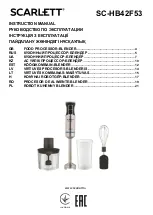
OPTIMOD-AM DIGITAL
INTRODUCTION
1-9
output of OPTIMOD-AM and then to restore the preemphasis at the
transmitter. The best one can do is to use NRSC preemphasis, apply NRSC
deemphasis before the lossy link’s input, and then re-apply NRSC preem-
phasis at the link’s output.
If only an analog link is available, use a 9300’s audio output and feed the audio di-
rectly into the link. If possible, request that any transmitter protection limiters be
adjusted for minimum possible action — OPTIMOD-AM does most of that work.
Transmitter protection limiters should respond only to signals caused by faults or by
spurious peaks introduced by imperfections in the link. To ensure maximum quality,
all equipment in the signal path after the studio should be carefully aligned and
qualified to meet the appropriate standards for bandwidth, distortion, group delay
and gain stability, and such equipment should be re-qualified at reasonable inter-
vals. (See
Optimal Control of Peak Modulation Levels
on page 1-7).
If the transmitter is accessible:
You can achieve the most accurate control of modulation peaks by locating
OPTIMOD-AM at the transmitter site or by connecting it to the transmitter through
an uncompressed digital STL.
Because OPTIMOD-AM controls peaks, it is irrelevant whether the audio link feeding
OPTIMOD-AM’s input terminals is phase-linear. However, the link should have low
noise, the flattest possible frequency response from 30-9,500, and low nonlinear dis-
tortion.
Studio-Transmitter Link
Transmission from Studio to Transmitter
There are several types of studio-transmitter links (STLs) in common use in broadcast
service: uncompressed digital, digital with lossy compression (like MPEG, Dolby
®
, or
APT-x
®
), microwave, analog landline (telephone/post line), and audio subcarrier on a
video microwave STL.
STLs in AM service are used in two fundamentally different ways. They can either:
pass unprocessed audio for application to the 9300’s input, or
pass the 9300’s peak-controlled analog or digital audio outputs for application
to the transmitter.
These applications have different performance requirements. In general, a link that
passes unprocessed audio should have very low noise and low nonlinear distortion,
but its transient response is not important. A link passing processed audio does not
need as low a noise floor as a link passing unprocessed audio. However, its transient
response is critical. At the current state of the art, an uncompressed digital link using
digital inputs and outputs to pass audio in left/right format achieves best results. We
will elaborate below.
Summary of Contents for OPTIMOD-AM 9300
Page 1: ...Operating Manual OPTIMOD AM 9300 Digital Audio Processor Version 2 0 Software...
Page 7: ...Operating Manual OPTIMOD AM 9300 Digital Audio Processor Version 2 0 Software...
Page 178: ...3 46 OPERATION ORBAN MODEL 9300...
Page 200: ......
Page 221: ...OPTIMOD AM DIGITAL TECHNICAL DATA 6 21...
Page 222: ...6 22 TECHNICAL DATA ORBAN MODEL 9300 CONTROL BOARD PARTS LOCATOR...
Page 228: ...6 28 TECHNICAL DATA ORBAN MODEL 9300...
Page 229: ...OPTIMOD AM DIGITAL TECHNICAL DATA 6 29 I O DSP BOARD LEFT AND RIGHT ANALOG INPUTS...
Page 230: ...6 30 TECHNICAL DATA ORBAN MODEL 9300 I O DSP BOARD ANALOG OUTPUTS...
Page 231: ...OPTIMOD AM DIGITAL TECHNICAL DATA 6 31...
Page 238: ...6 38 TECHNICAL DATA ORBAN MODEL 9300 FRONT VIEW REAR VIEW FRONT PANEL PARTS LOCATOR DIAGRAM...
















































